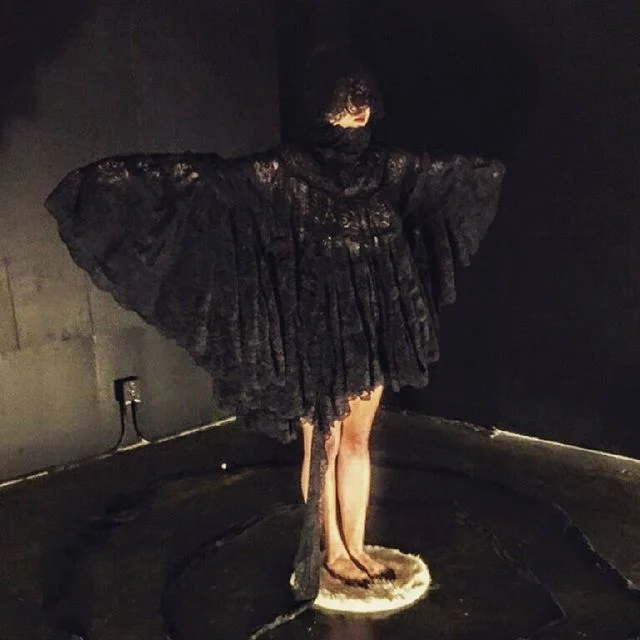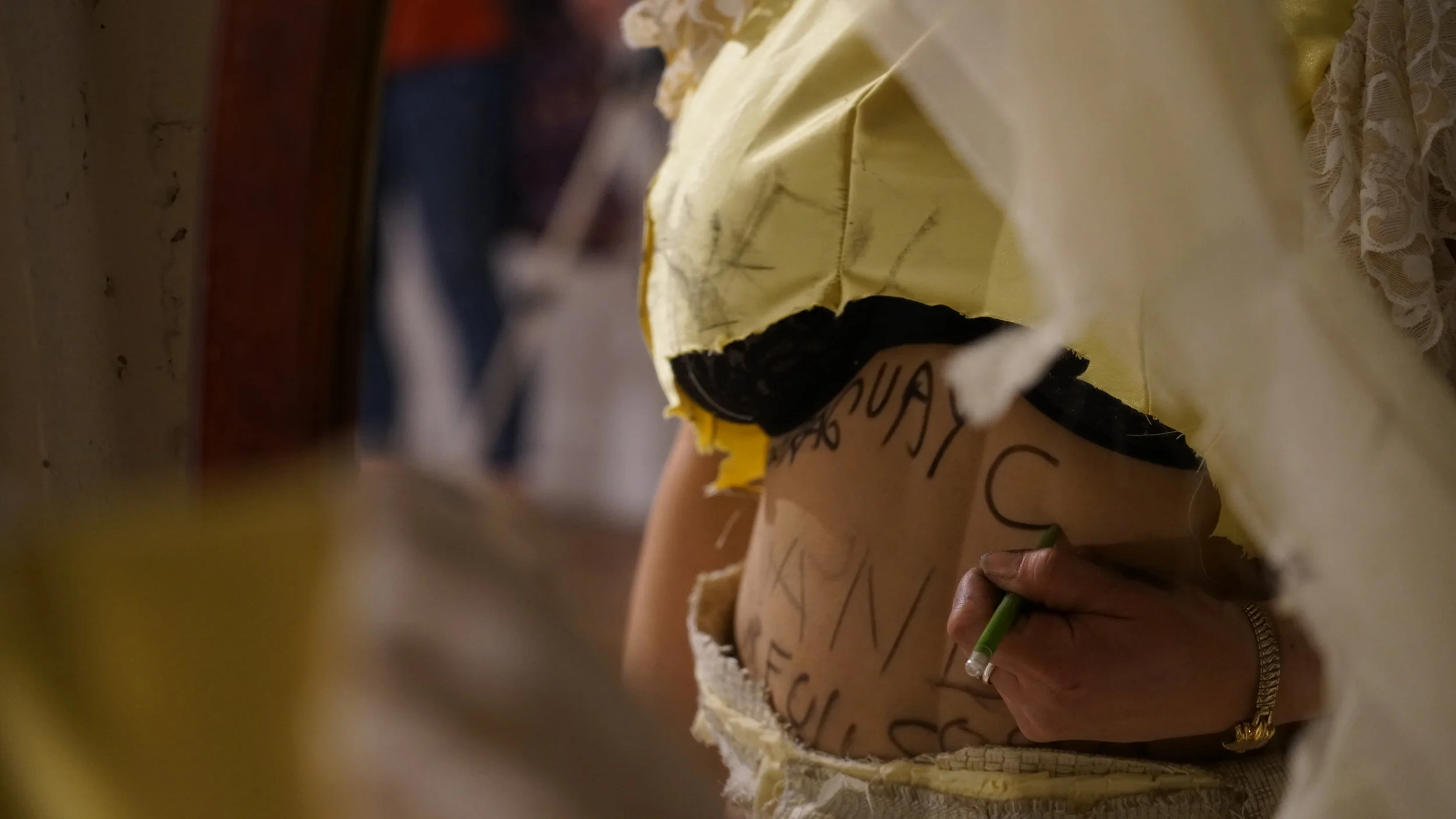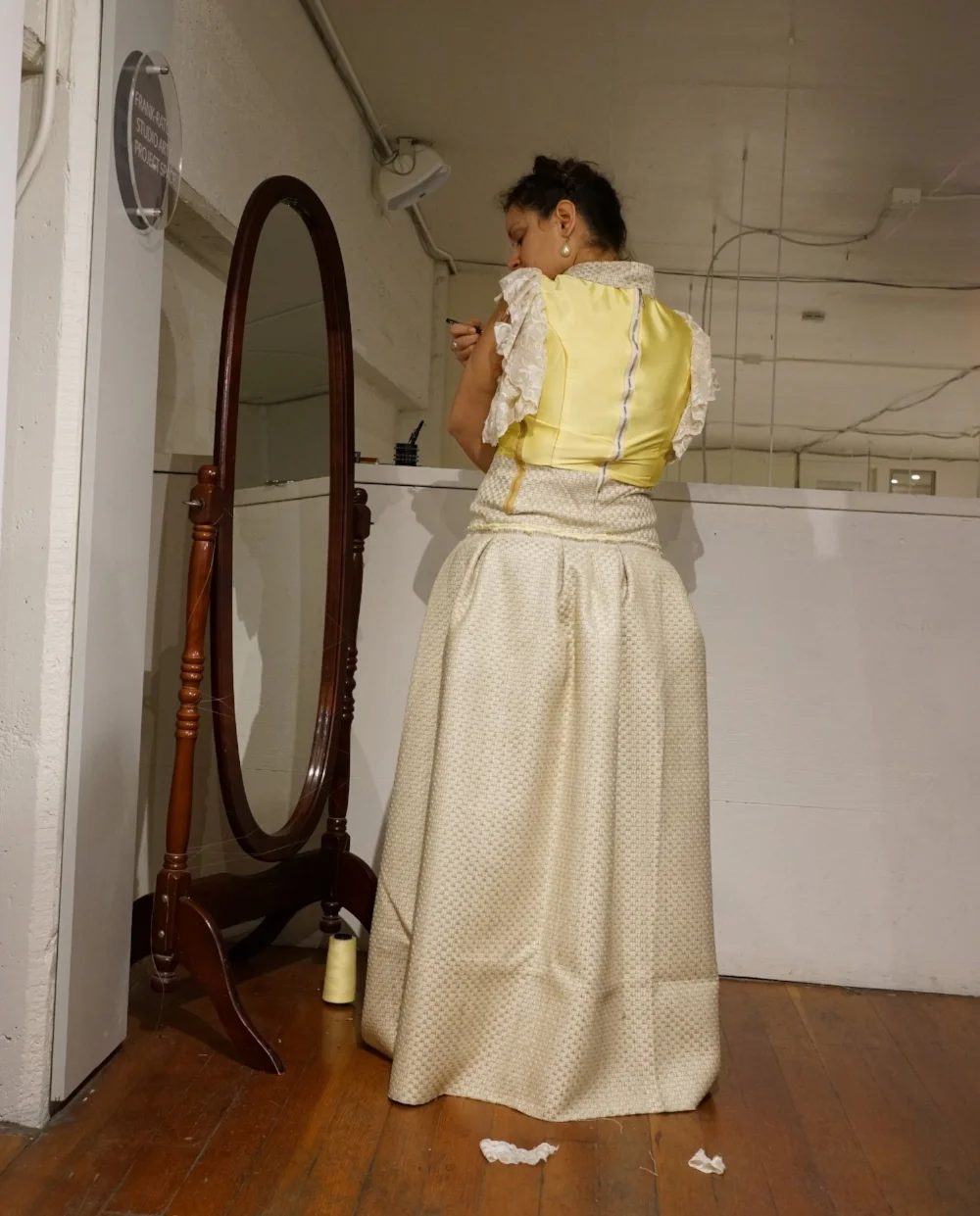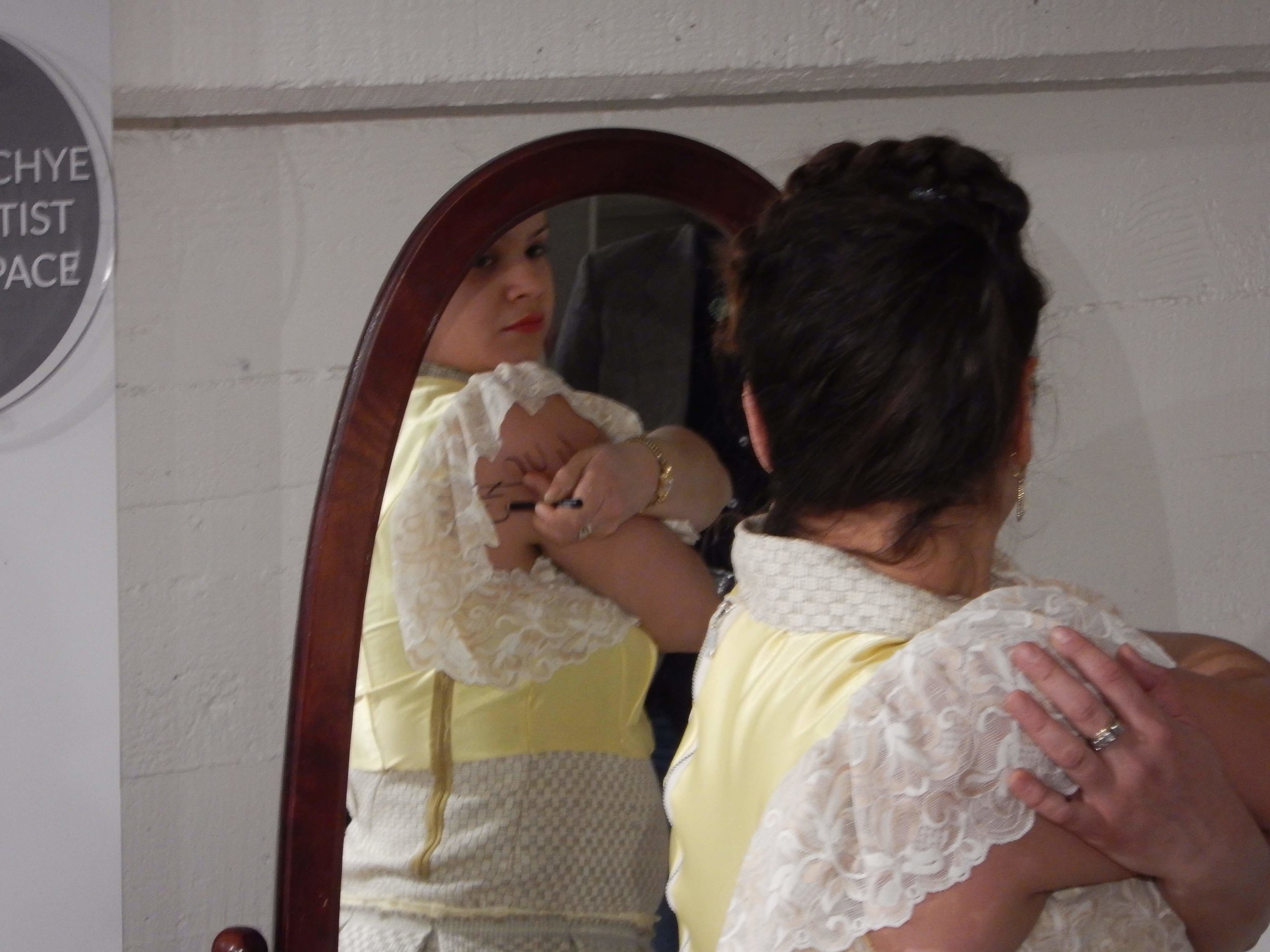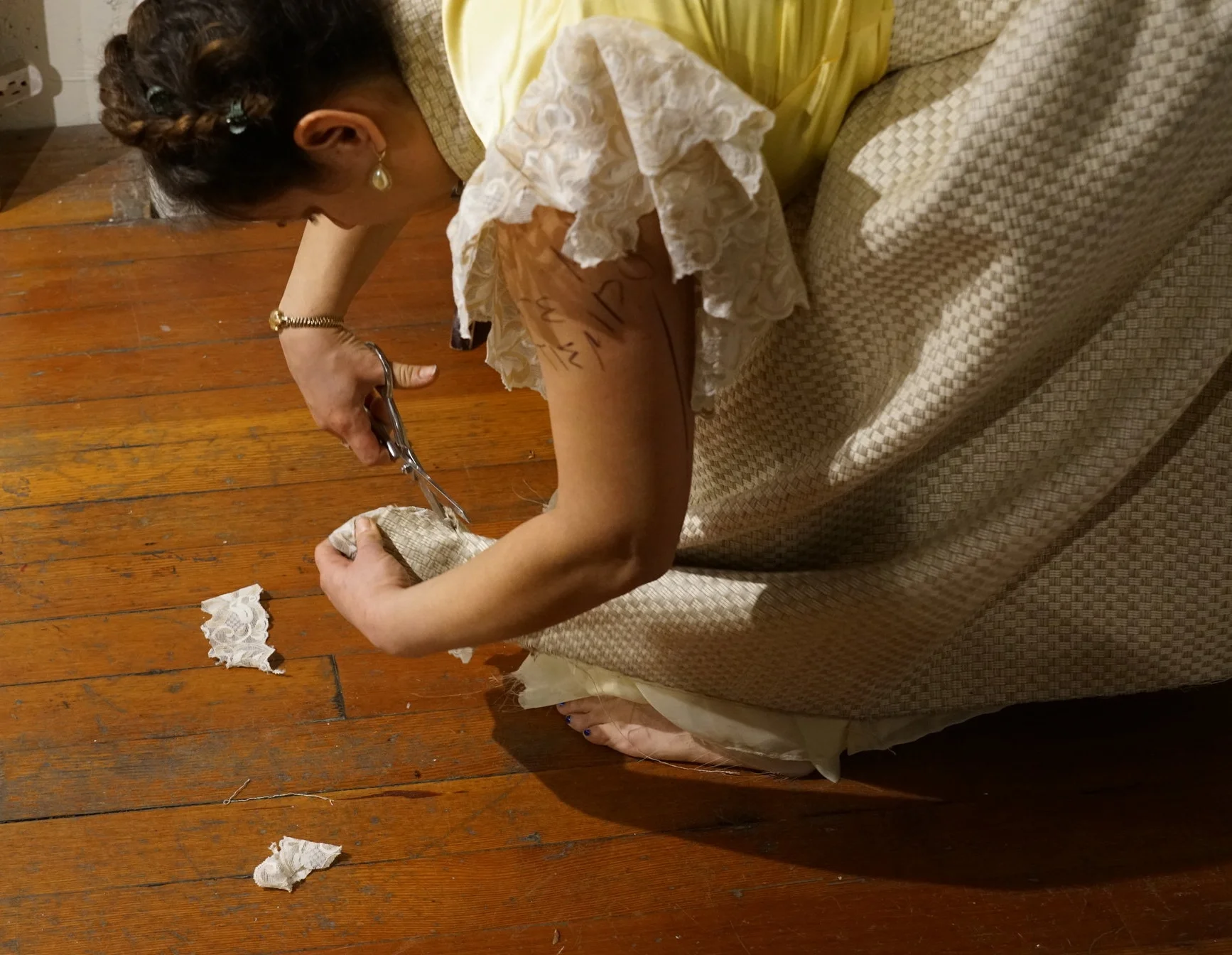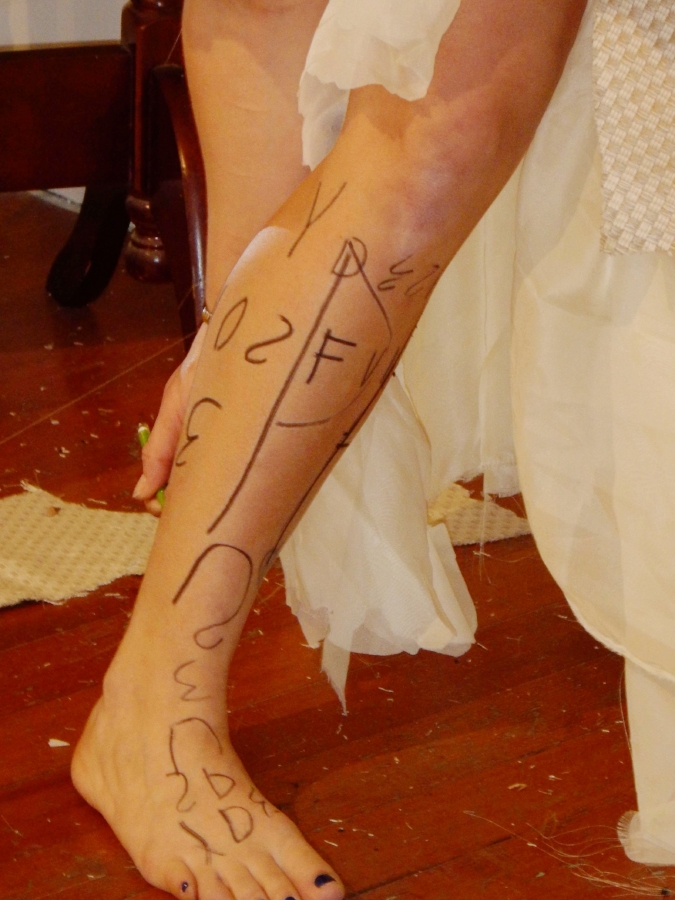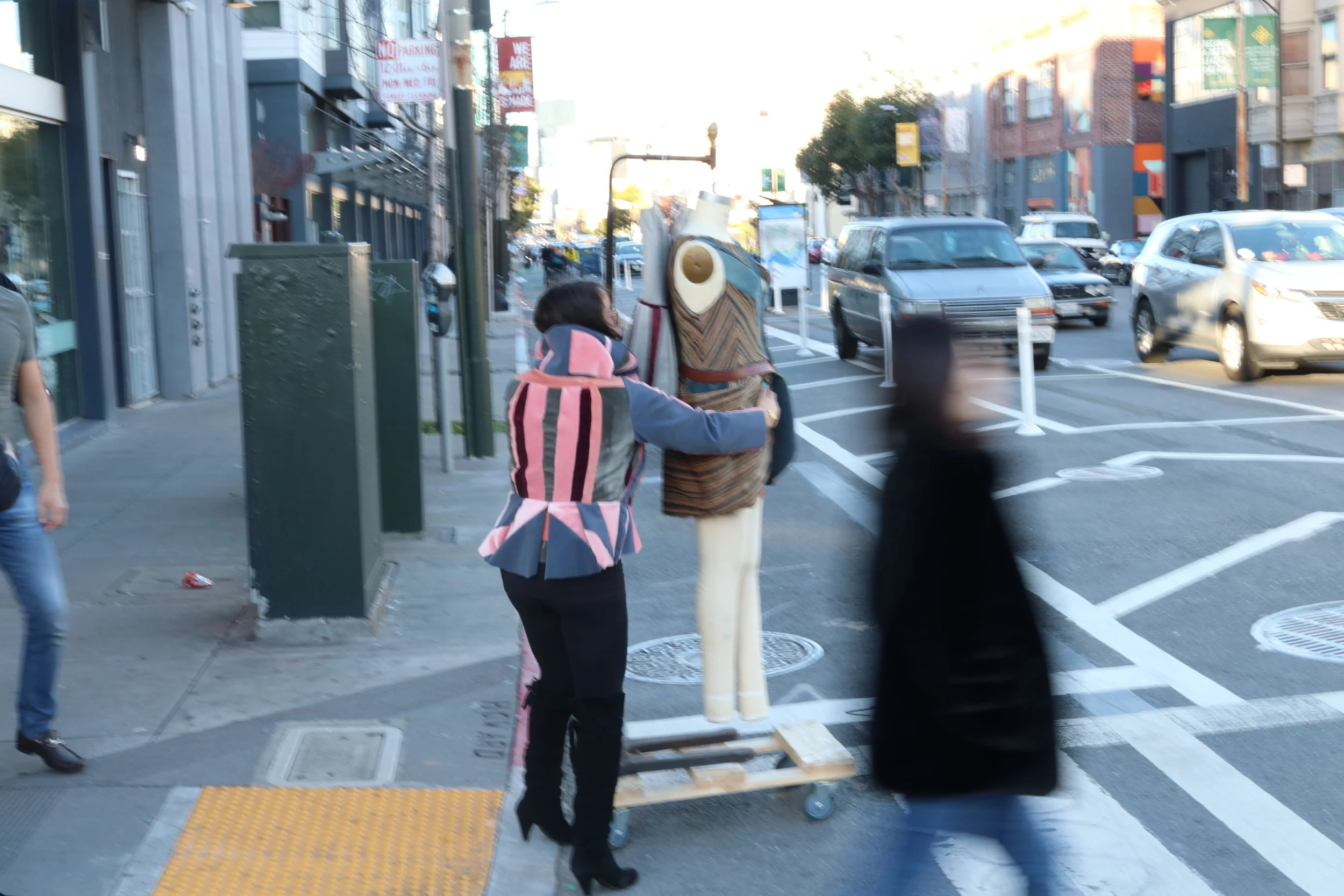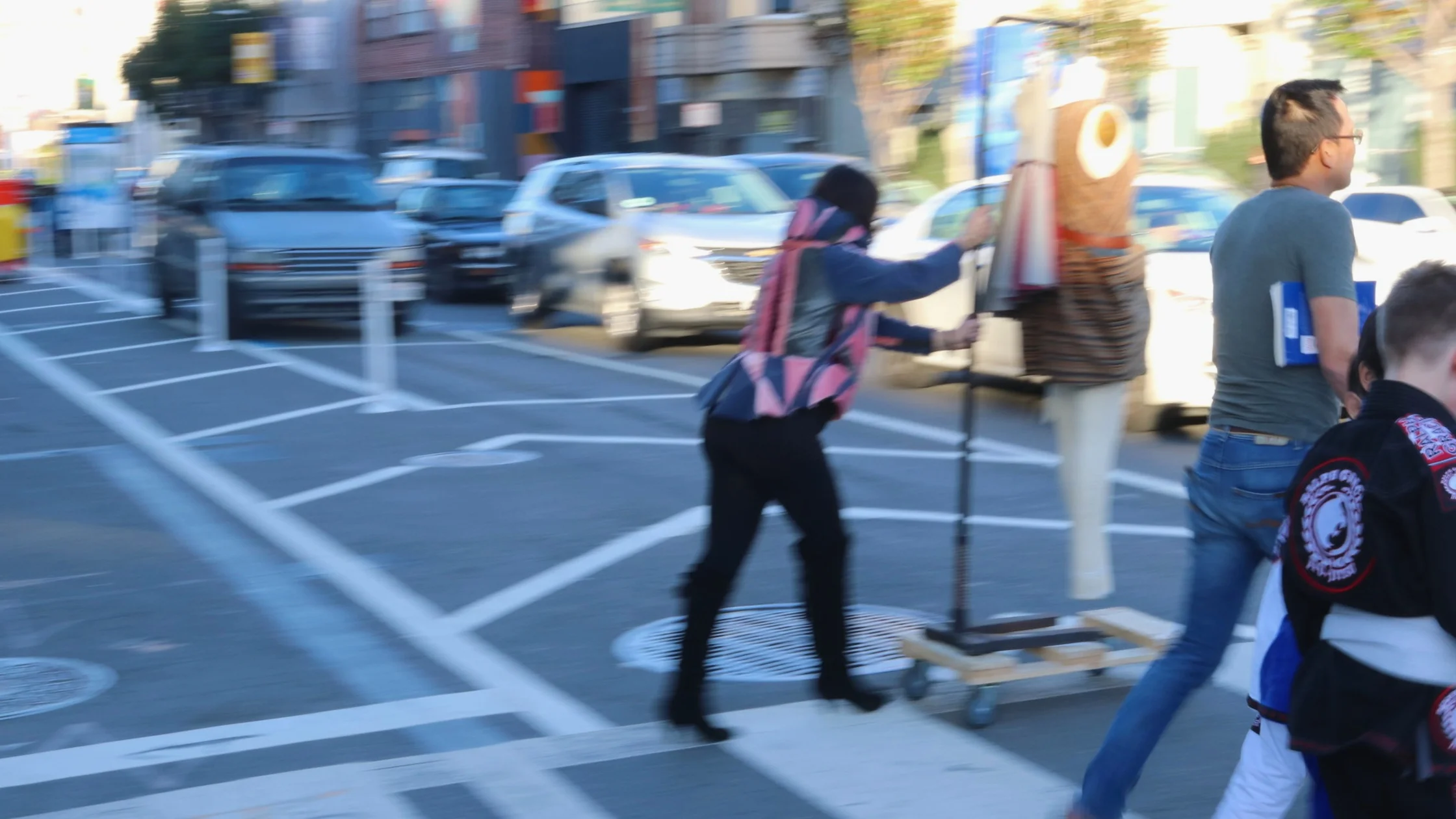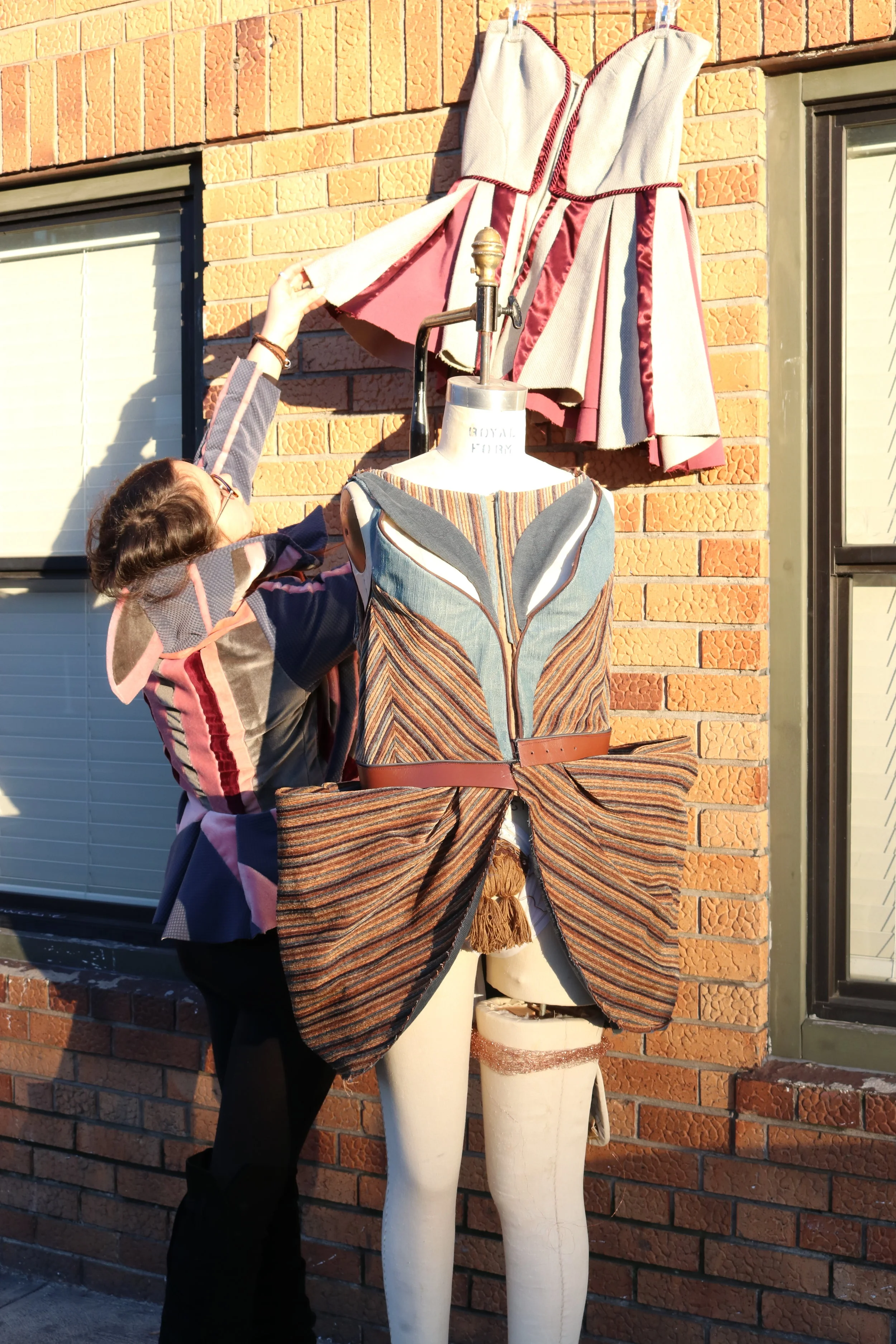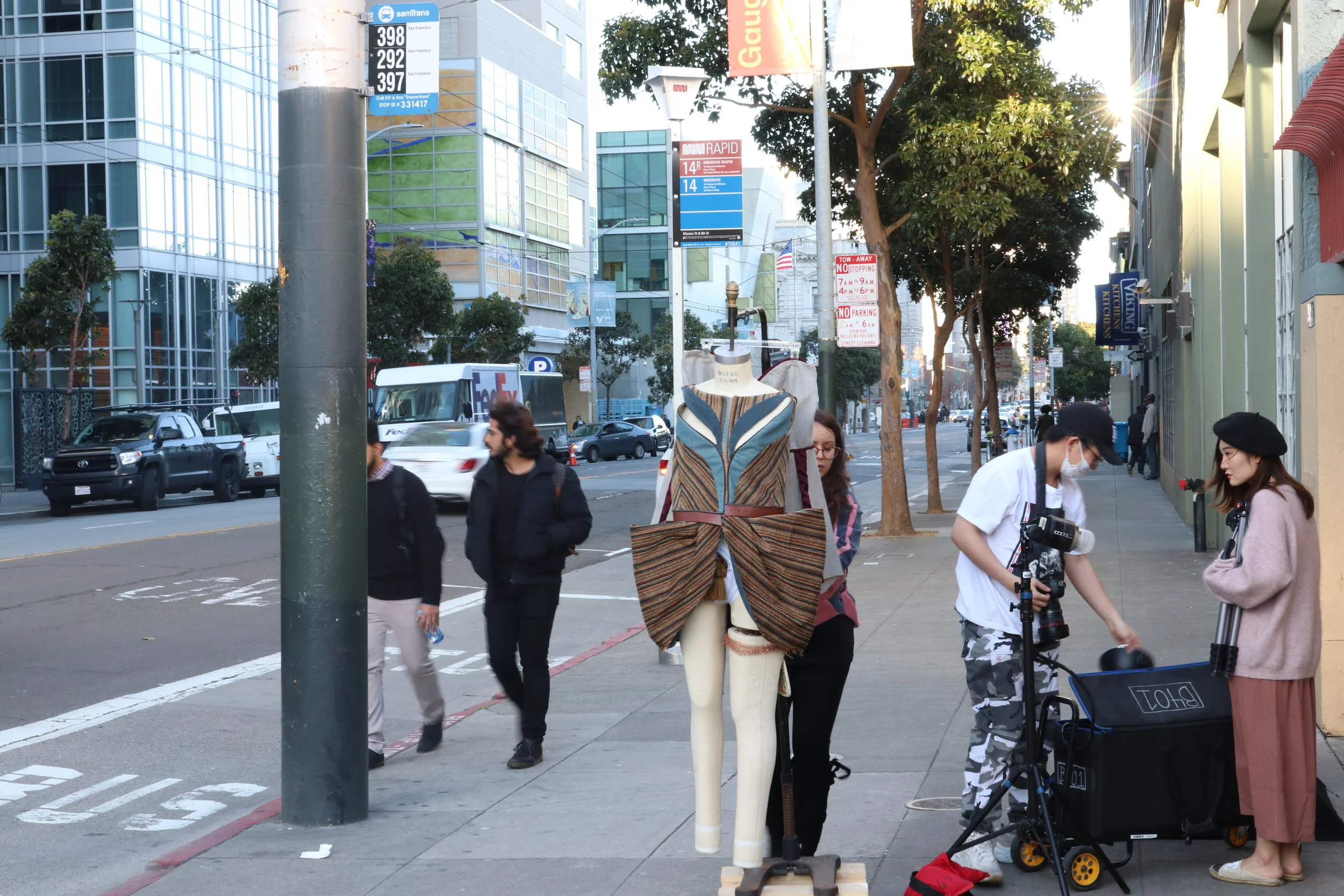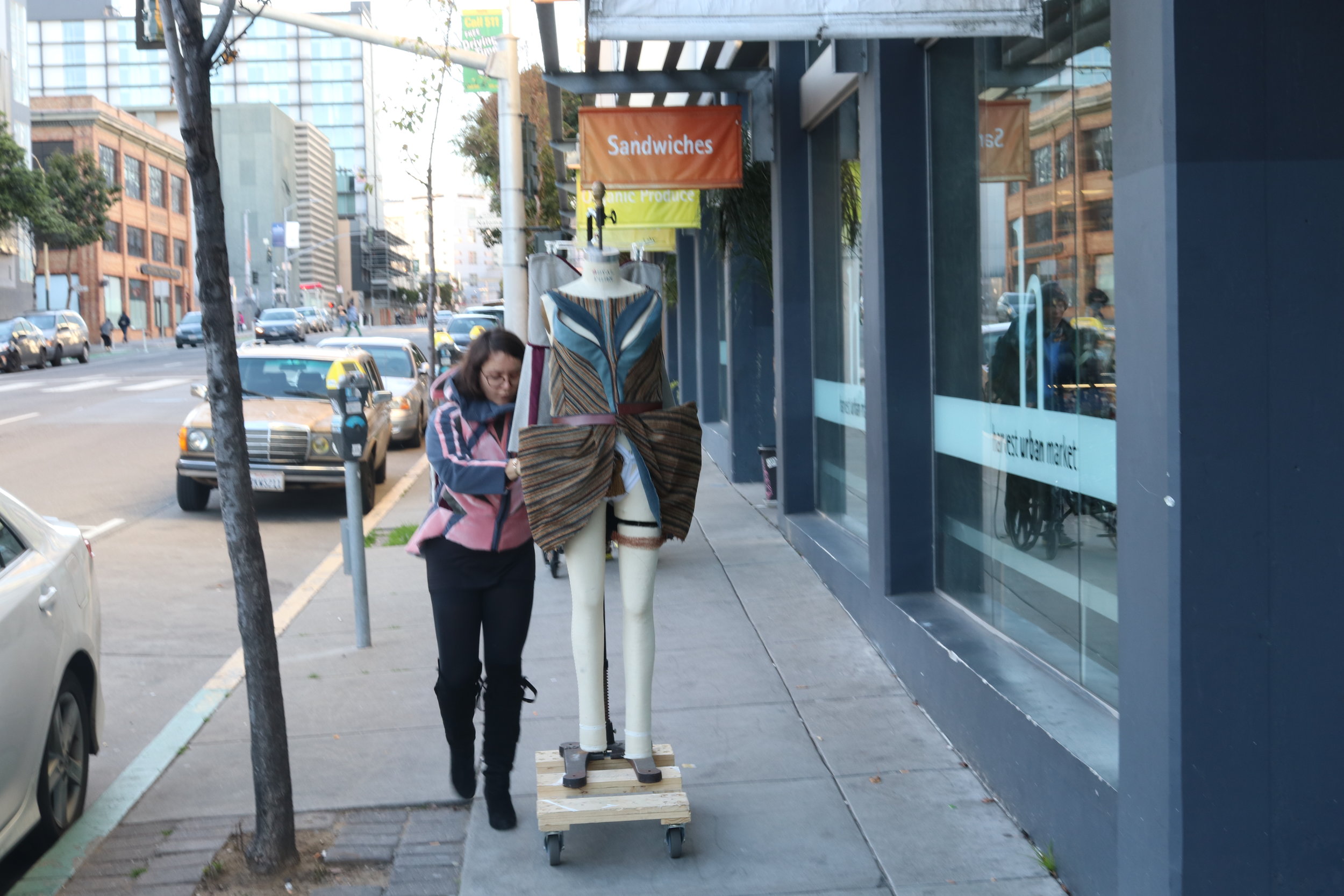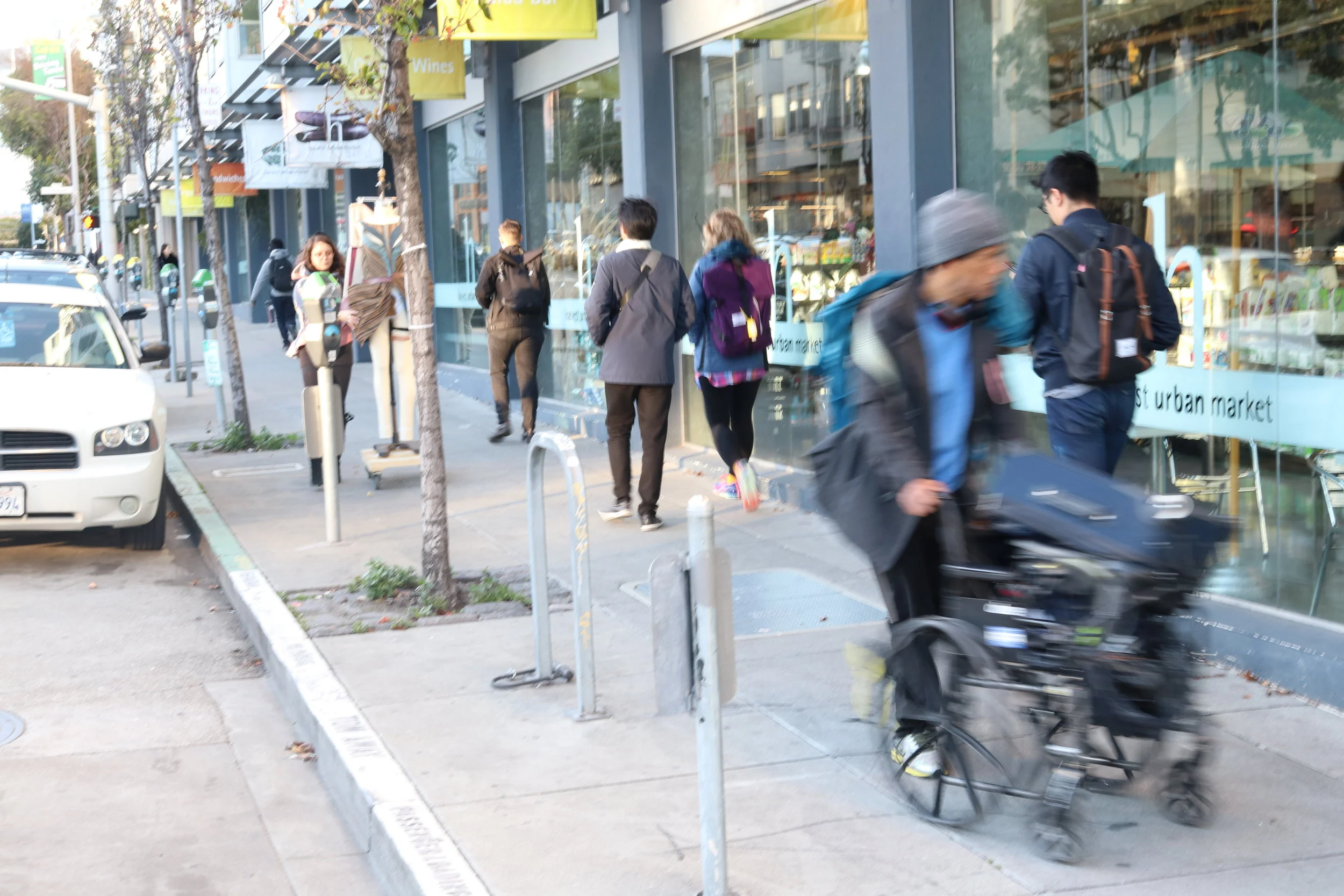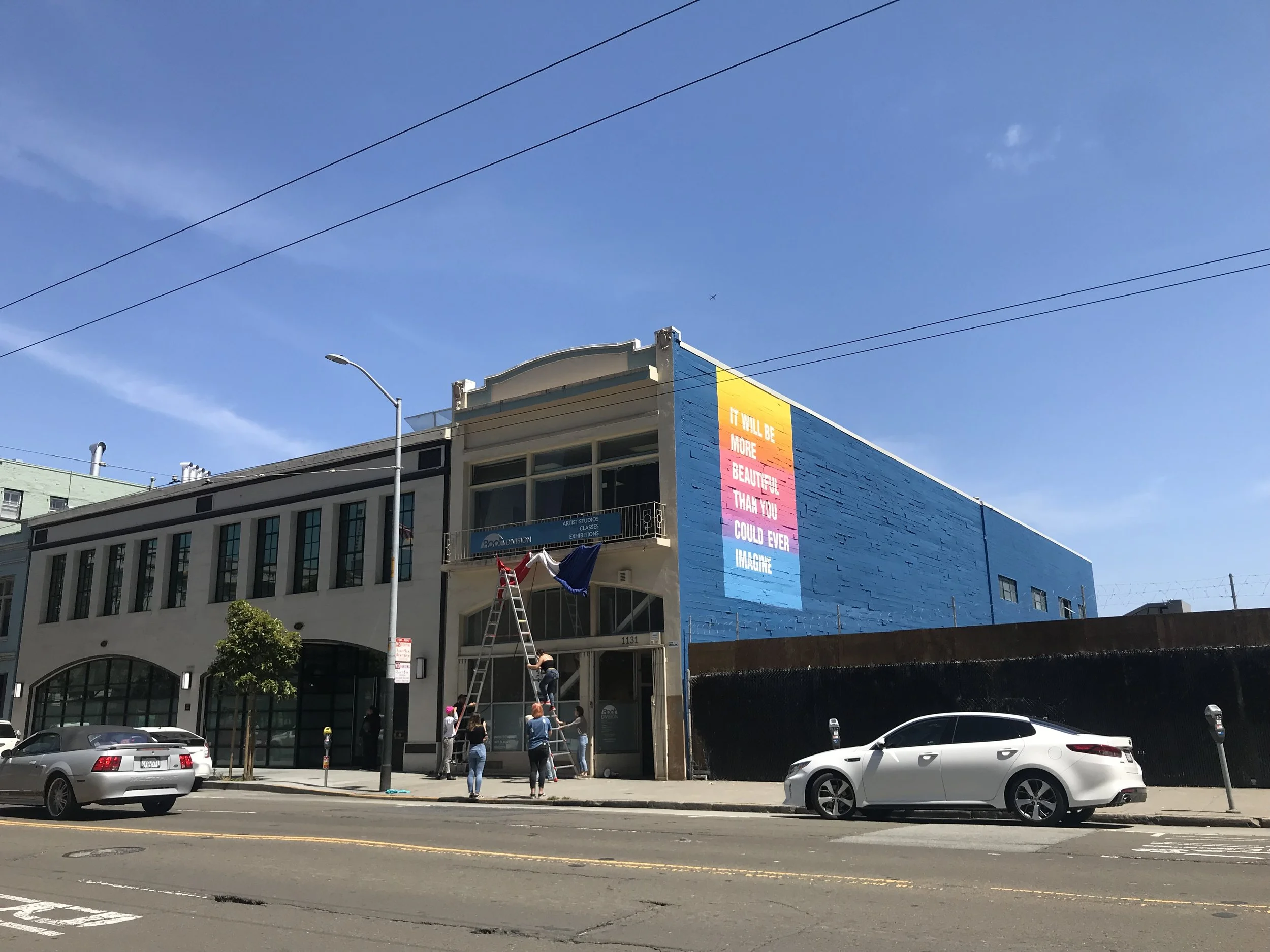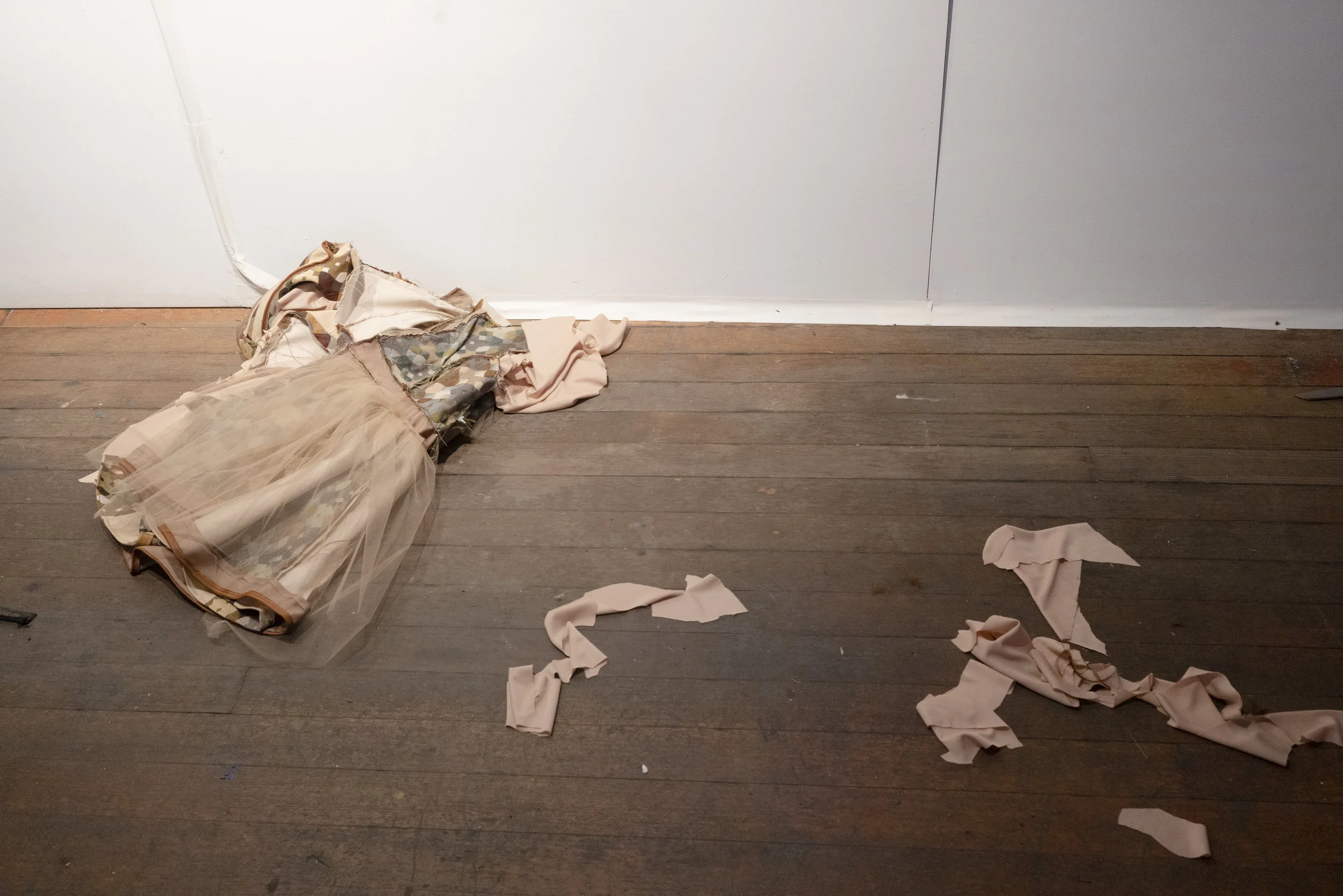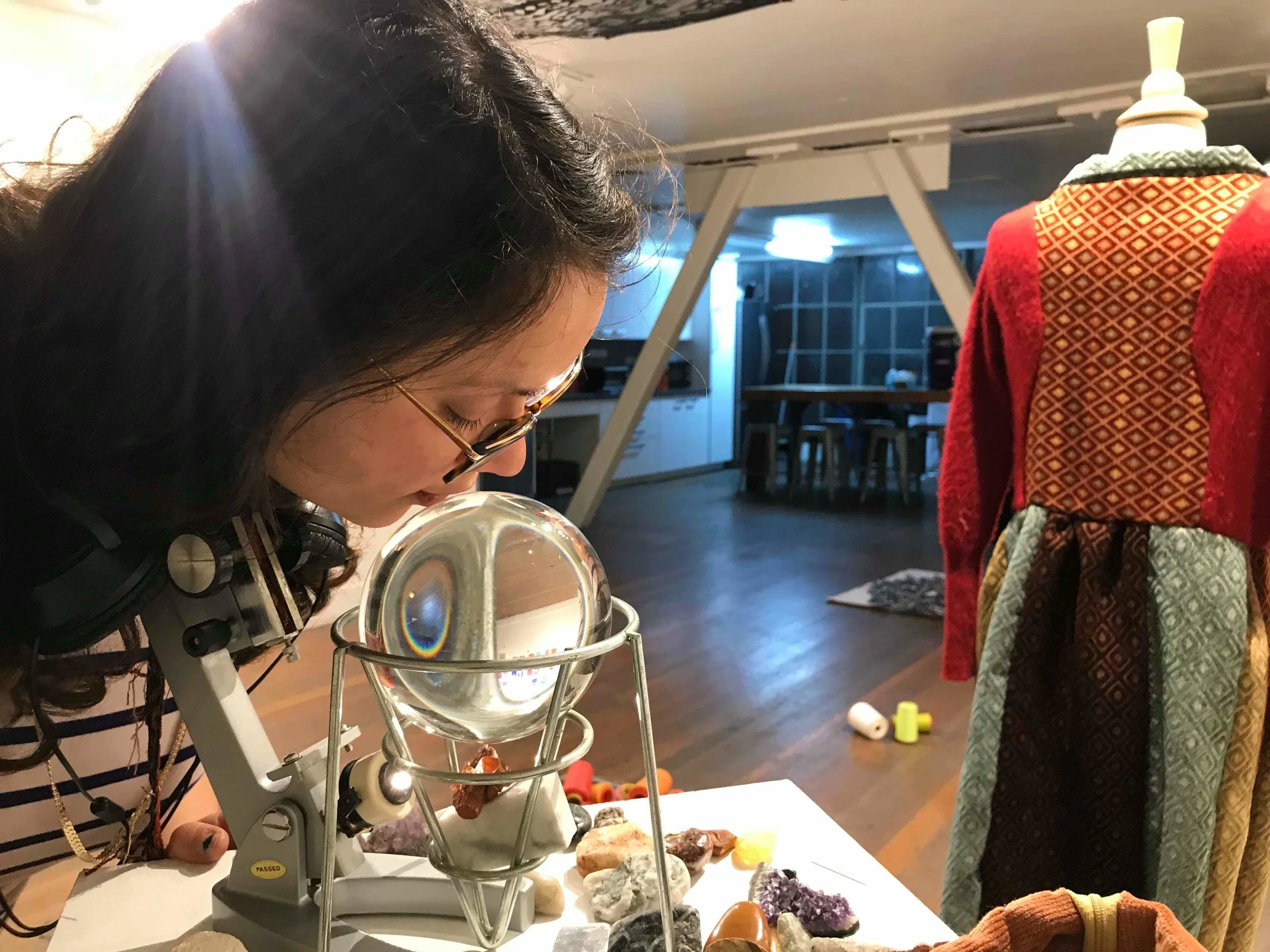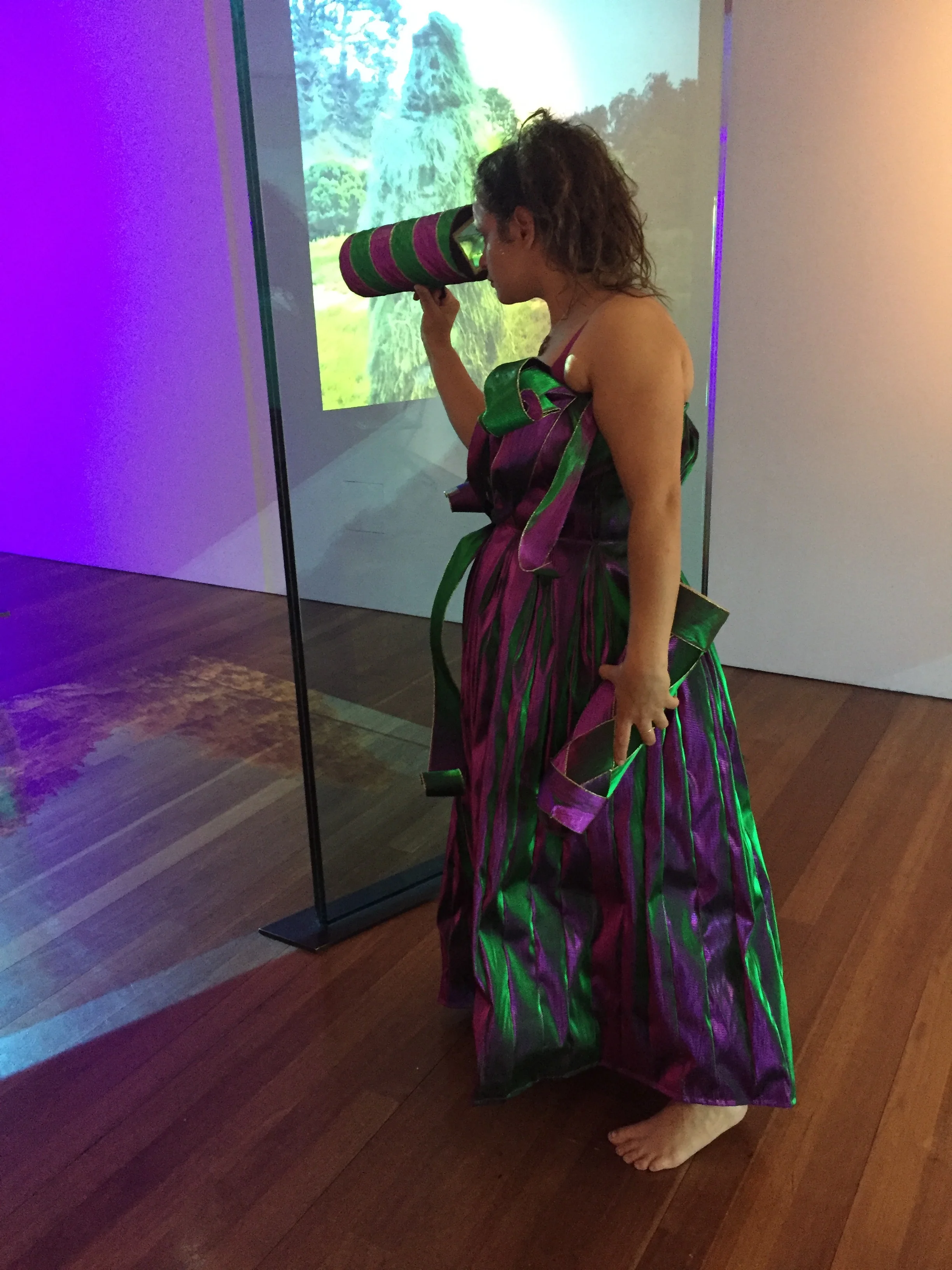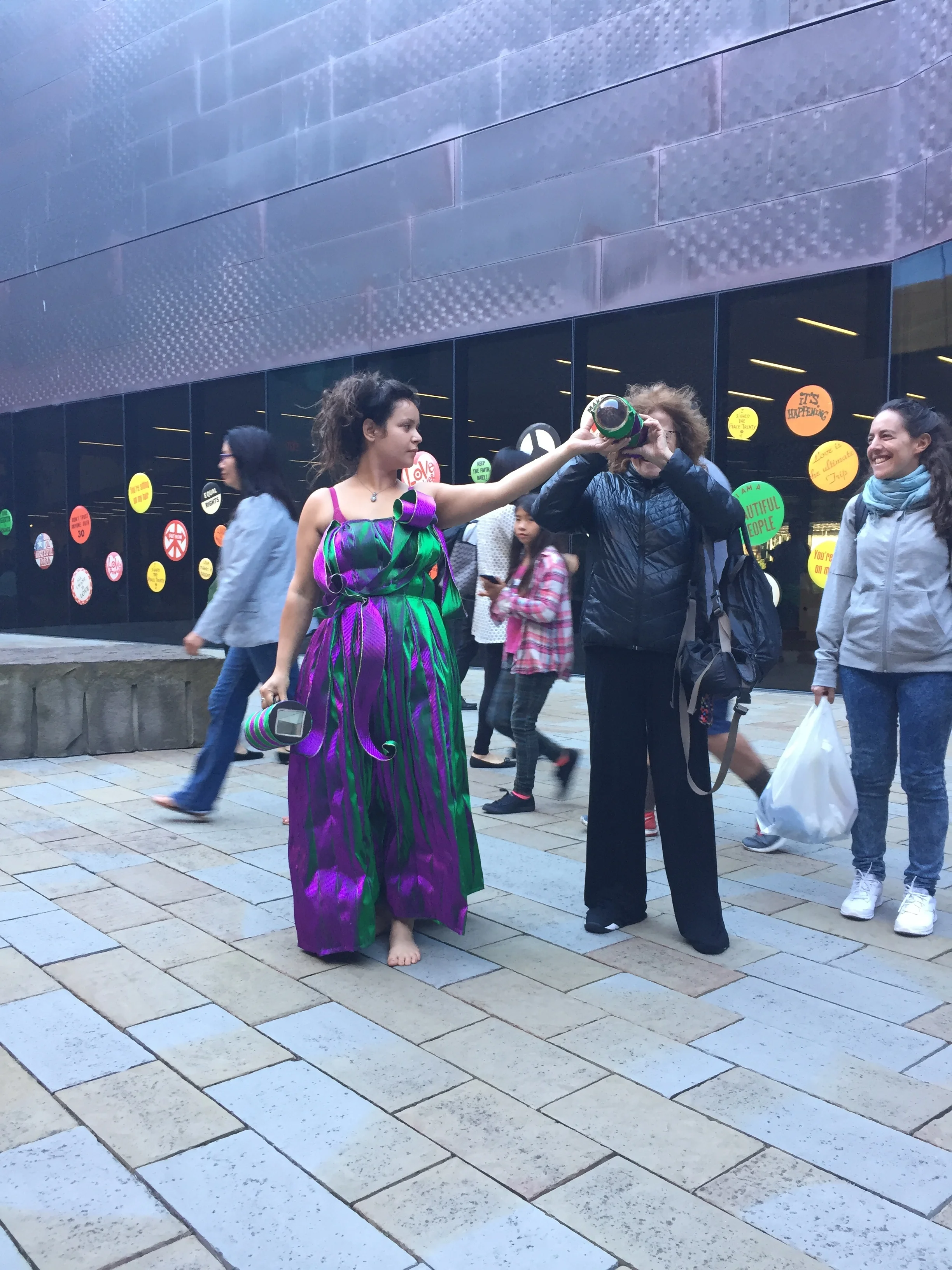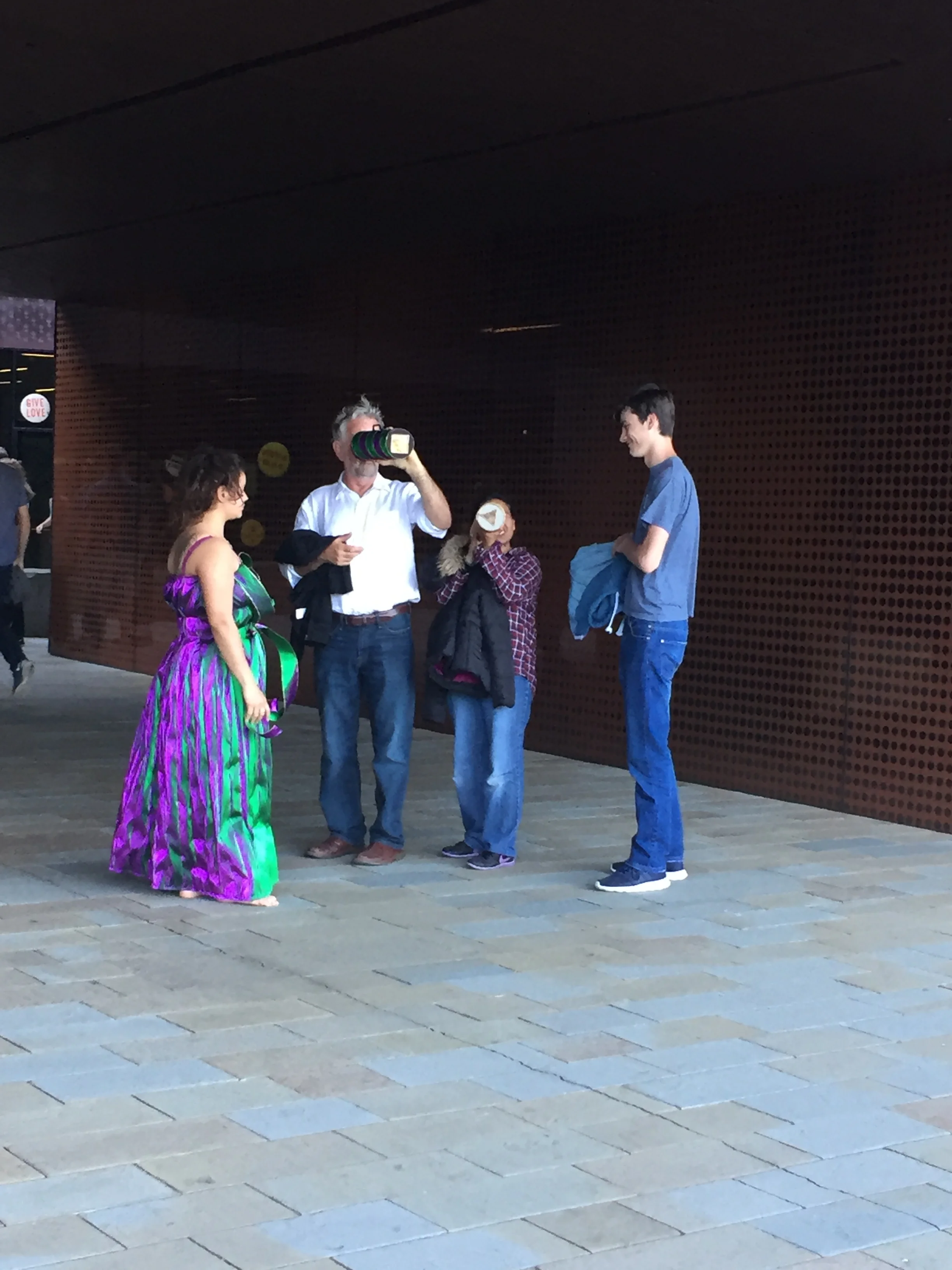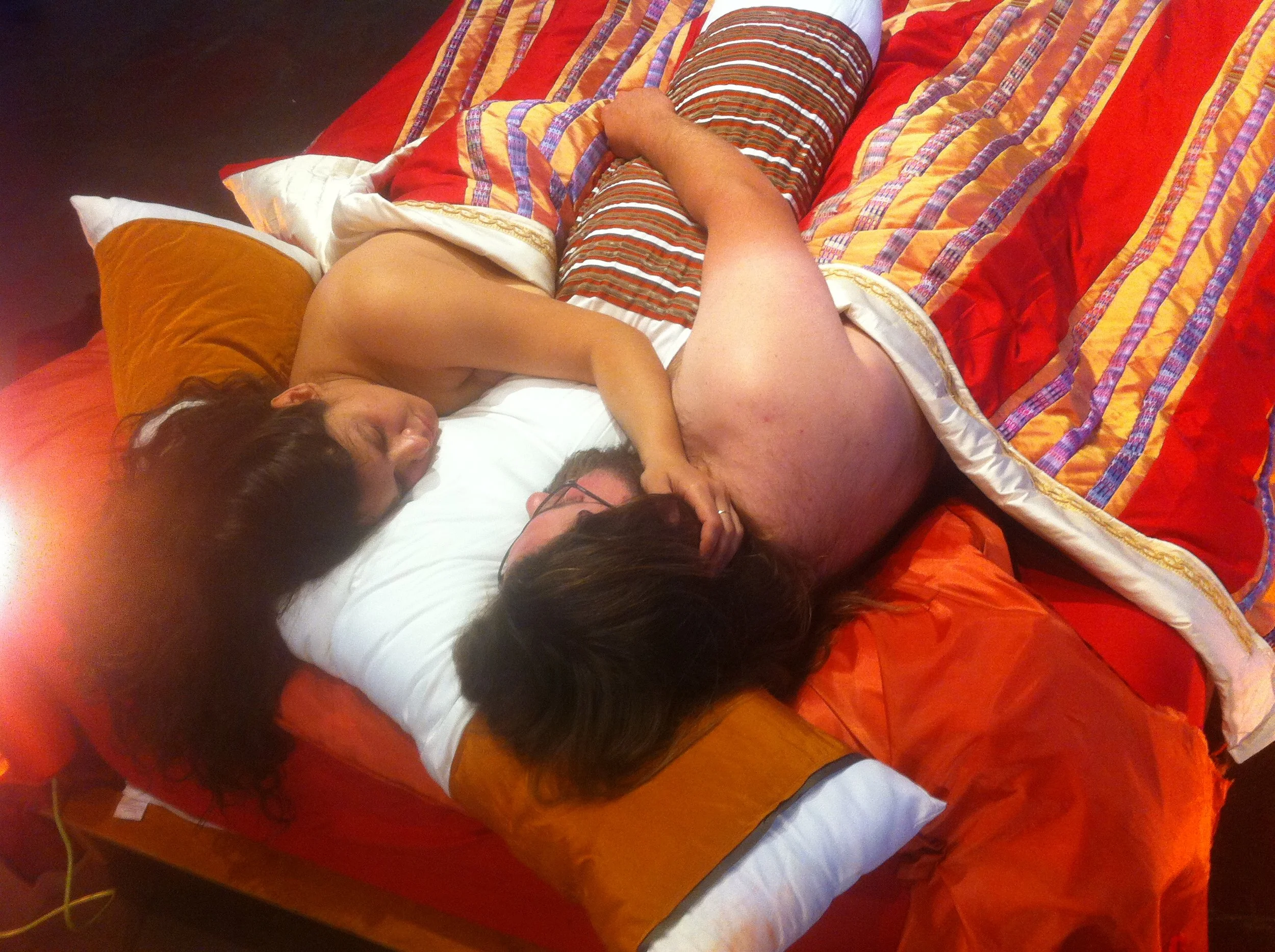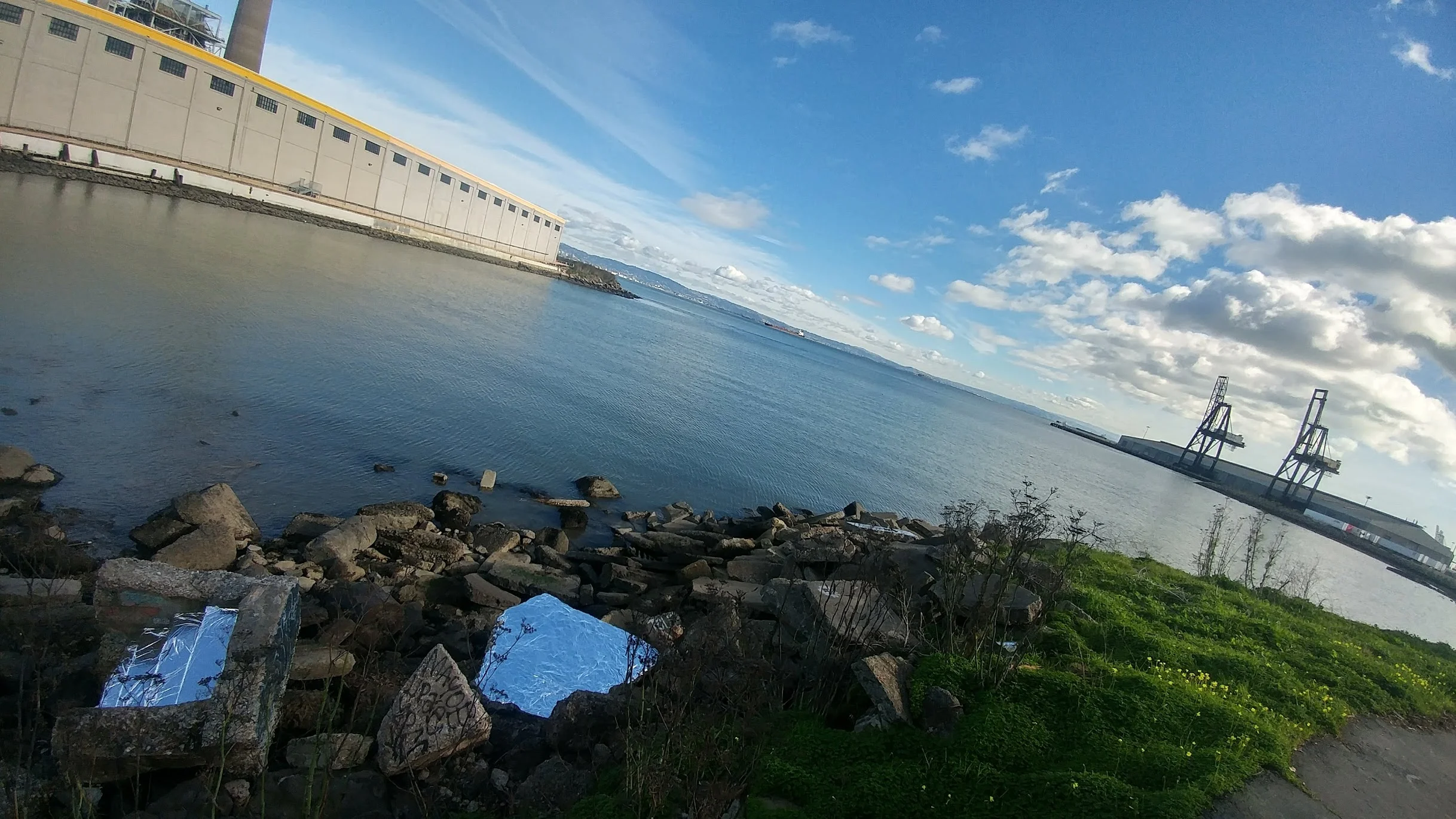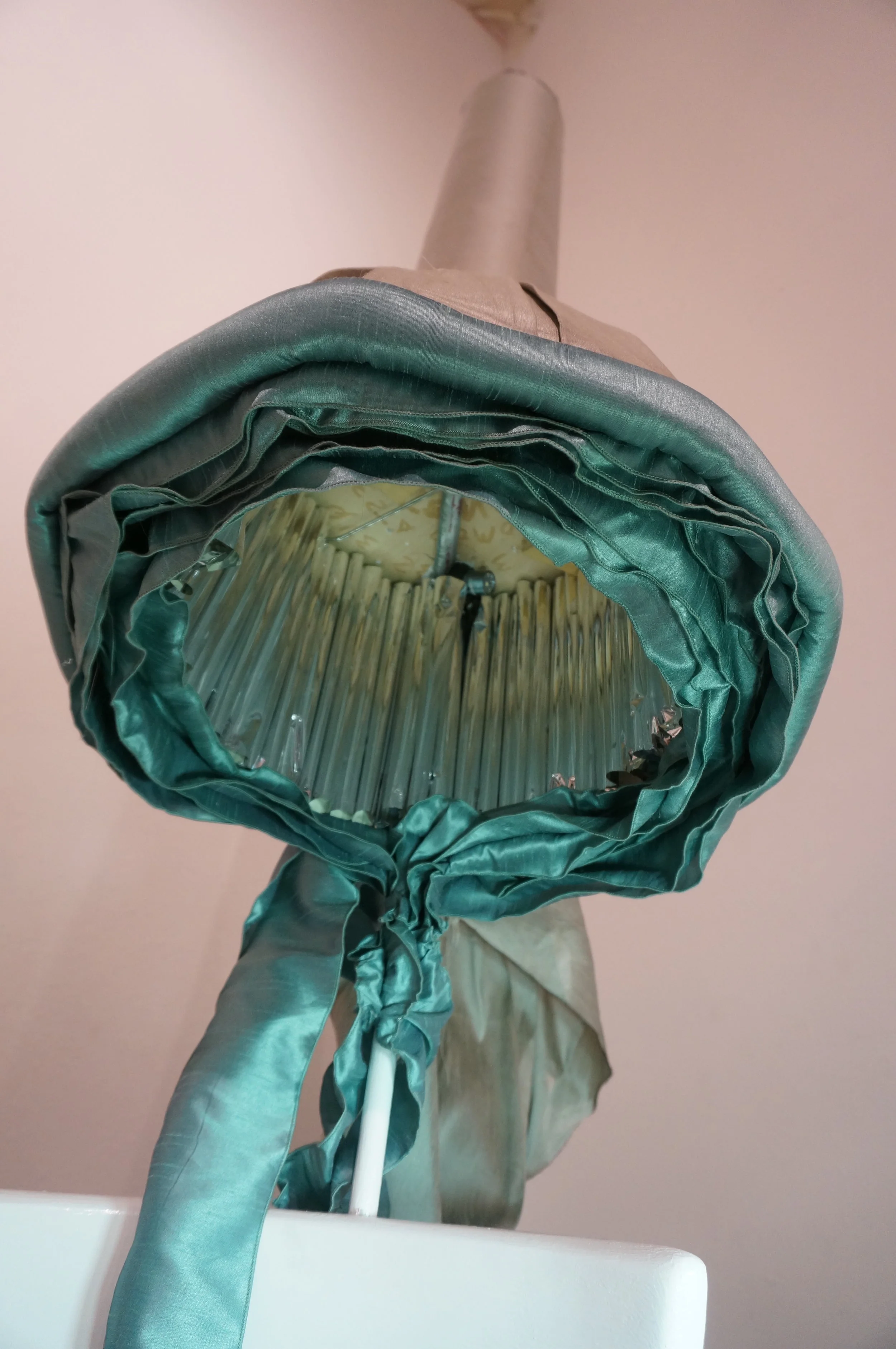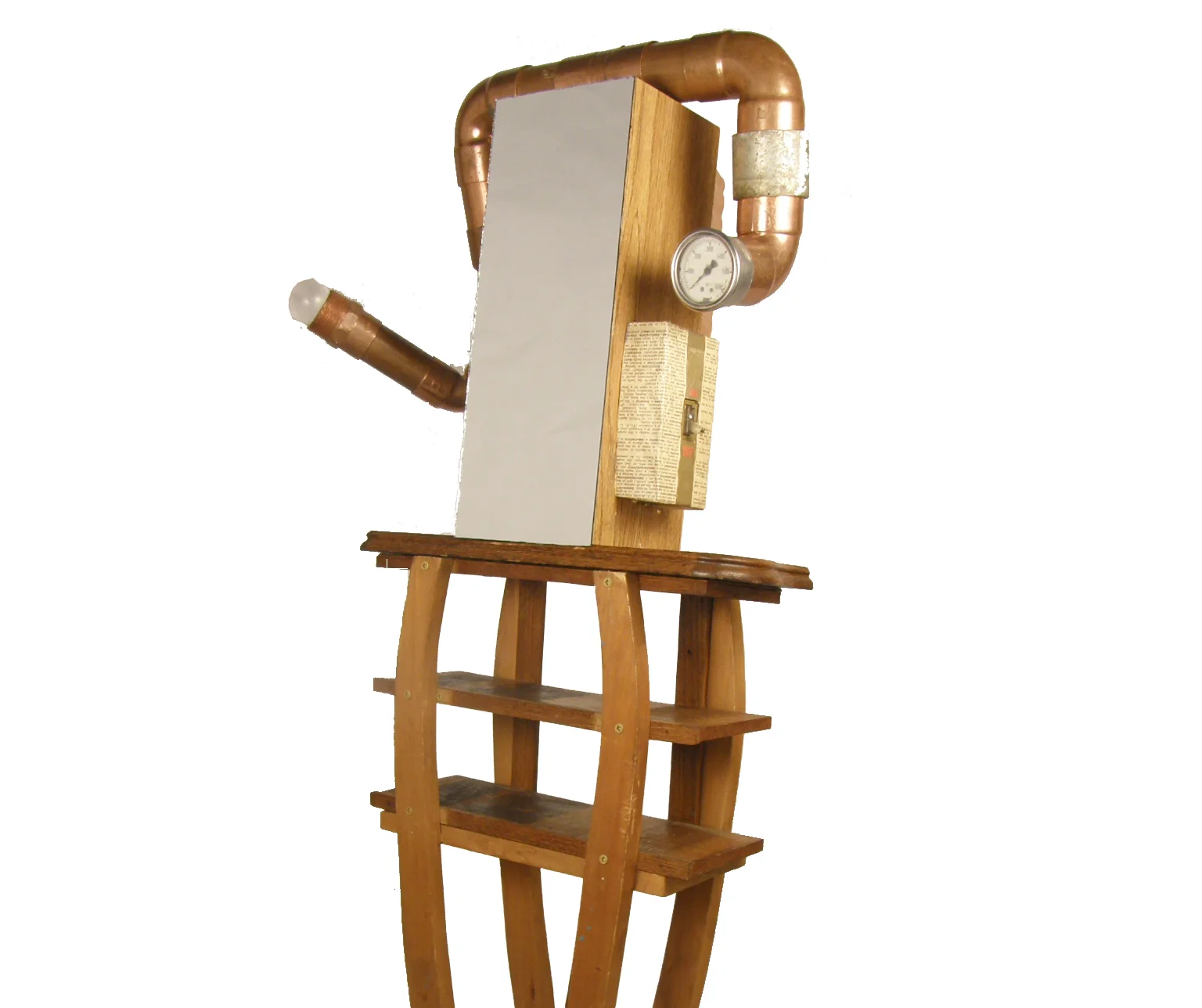This particular room is a space where reality is questioned, and surrealism takes over. The fusion of the viewer’s own presence and the artwork stir a surreal relationship between one another. This is a feeling filled with questions. This confusion is also generated from the viewer’s first reaction. As a person walks into this space, their subconscious makes them feel comfortable. They notice objects that they are partially familiar with yet they still seem new. The overall layout is similar to the ones that spectators might be used to. This room resembles the living space of a certain being, because of the layout and nature of its elements. Normally in a reflective space within a person’s home one would find a chair, alongside a table, and also maybe other types of furniture such as a closet or cabinets. Therefore they instantly become comfortable because of the familiarity evoked from the artwork. As humans we are influenced by our subconscious. We are like sponges absorbing each waking moment. All these information gets inscribed into our subconscious. It is after this familiar moment that the surrealist ideology implied by this environment is met with the viewer’s presence and conscious. It takes the spectators out of themselves and pushes them into a state of confusion, and acceptance all at once. Therefore the relationship between man and surrealism is explored. This is a journey that can be quite surreal. This is why the piece is titled Sir Real Odyssey. The experience is surreal. To the participants, it’s like a journey within themselves.
The interaction of the spectators with the artwork is just as important as the pieces themselves. Viewers are encouraged to sit on the chair and interact with the Ta-bleyephon. Maybe the idea of communicating with someone comes to mind. Or to open the Artcabinox. Realize its emptiness, and immediately think of what kind of objects to put inside it. Each element is meant to use its nature to provoke thought, and transcend the audience into a surreal dimension that is in fact, also quite real.
These elements feed off of one another. Each sculpture adds to another what is subtracted from them. Although each piece is very important, the key element to the environment is the passageway that is created through the rotating double-sided painting. These different paintings get flipped as the viewer enters the back room. It changes the installations and address the idea of the human mind flipping perspective, which is also addressed in one of the sculptures called Wired Vision. This wall has several reasons for its existence. It allows the entrance into another realm. It enhances the fact that everything in life continues after they seem to end. The gateway is not meant to be noticeable, but it is meant to be entered. It’s secretive, but inviting all at once. Once inside the room, the spectator gets transcended into a state of awe and self perception. Questions within get aroused. On the front panel the spectator is to find a “square” that fits his/her height. Essentially, this person will be alone in the back room, surpassing the present and diving into their subconscious. The two dark spots within the squares, placed where your eyes would most likely be fixated in act as a lock for the viewer’s vision and the panel. The “back room” is the other dimension where we often don’t dare to enter. Some viewers will not even notice the secret passageway into another dimension, but everyone is encouraged to explore. This fact is a commentary on how some people only see the surface of things. The back room is a representation of this implied continuity. There’s more than meets the eye. This exploration and realization of other elements within the room is what the title of the piece refers as a surreal odyssey.
Back onto the “main room” the sculptures are these artistic objects that can be utilized within a household or any living space. They all share interactive characteristics that differentiate them from other types of artistic pieces that are simply to be looked at. These sculptures are meant to be handled and ultimately, customized to one’s own needs.
One of the pieces is called the Artcabinox. The meaning of its name is simply the meaning of its purpose, an artistic cabinet box. Like all the other sculptures, it is made mostly from found objects, and stretched canvas. Incorporating already made objects generate a sense of previous history. This aspect adds to the familiarity the spectator feels as he/she enters the environment. The back to back stretched canvases create a box, in which inside an upside down train station lays. Its emptiness immediately provokes thought to the viewer. Ideas of what can it hold crowds their head. This objective to stimulate the imagination is very much intended, and usually met. It is why it can be customized to one’s own need, and also utilized within a living space. The juxtaposition of the different elements that make the piece is random yet intentional. The imagery and way the elements intertwine between each other is chaotic, and surreal. The legs that support the box (back-to-back canvas) are found mannequin legs. This detail is another addition to the surreal imagery because it evokes a feeling of a walking painting, which seems impossible yet quite real.
Another element in the main room is the Ta-bleyephone. Like the Artcabinox, its name derives from its personality and composition. It is also made from found objects and stretched canvas. The phone that is attached to the table has eyeballs with flower petals around them instead of speakers. This is a feature that articulates the surreal essence of the phone. It’s formed out of different ideas colliding, and meeting to form a new object, with new meaning. Its tiered like silhouette adds to the bewilderment of its form.
Like the Ta-bleyephone, and the Artcabinox there are other components to this room that add to the surreality. The Teleidoscopeye, is not just an accessory to the room, but rather an essential part to for the viewer to enhance his/her optical experience. The Teleidoscopeye distorts and multiplies reality. It adds to the bewildering surreal feeling spectators are overwhelmed with when making their journey through this room.
Another small piece is the floating clock. Its suspension is surreal because it’s in midair. It also only ticks when tapped, so it forces the viewer to interact and influence the sculpture with his/her input. The suspending clock also serves as a reminder to people on how they interact with time and how they also float in space.
Like the Teleidoscopeye, there is an element which distorts the viewer’s vision if looked through. This piece is called Wired Vision. It is also made from found objects and sculpted materials. It builds off the idea of how our vision works before the image gets to the human brain. A perceived image is upside down before the brain flips it to its correct orientation. This is a commentary on how our subconscious absorbs the world. The sphere at the end of the eye on this sculpture flips the image as the viewer is encouraged to look through the sculpted eye and onto the world. The curtain behind the eye acts as a shield against light and the outside world. It contains the viewer inside the piece as they become one with the sculpture. Looking through the sculpture is part of the journey that one takes as he/she travels around this room. His/her perspective on reality is flipped and questions are stirred. The sculpture is facing the rotating painting. It’s focused on the secret passageway that people may, or may not perceive. The purpose for this small detail is to be a clue of the passageway onto the other realm behind the painting.
All these sculptures are connected conceptually and aesthetically. Some share the same fabrics and generate connection through the materials used. Other elements connect through optical exercises, such as the Teleidoscopeye and Wired Vision. Both sculptures are interactive because the participant has to engage physically to look through the sculpture onto reality. Like these sculptures, the floating clock constantly needs to be reset through touch. It comments on the concept of time and how we interact with it on a daily basis. The surreal odyssey is about interacting with these different elements and perceiving life further than what we normally would. It explores the relationship between man and surrealism, and helps then reflect on their inner selves.























































